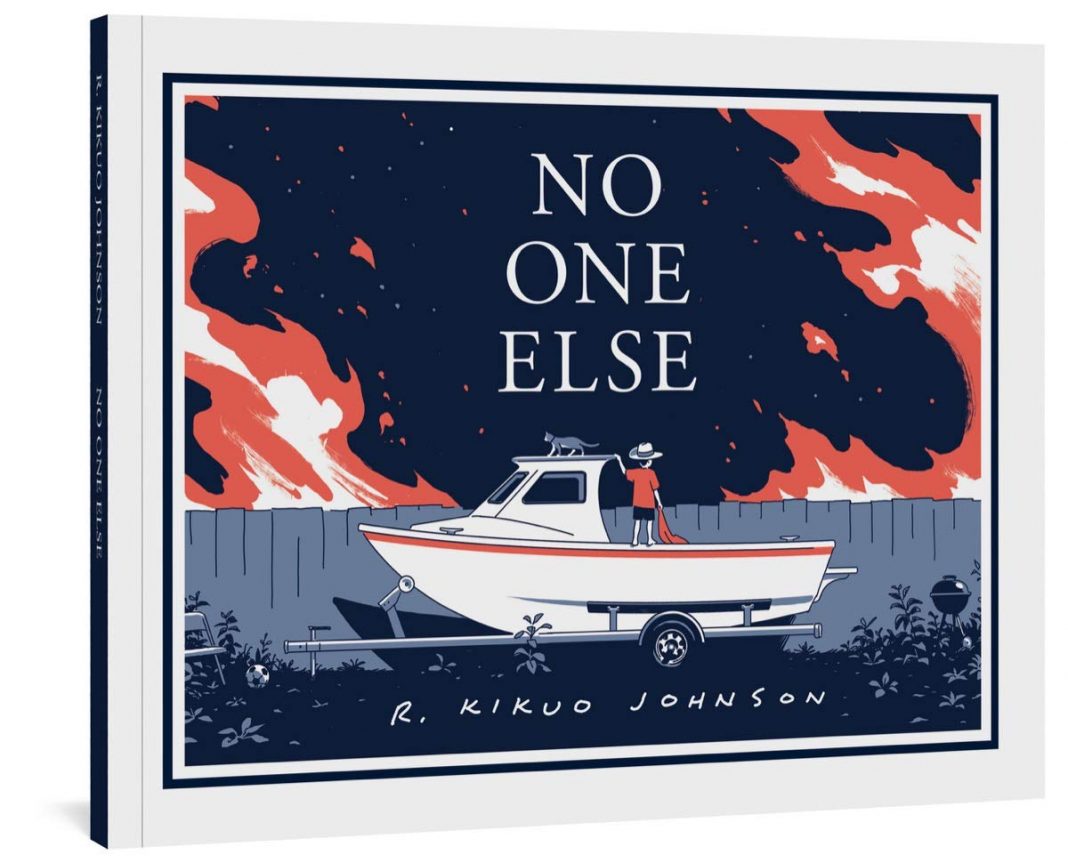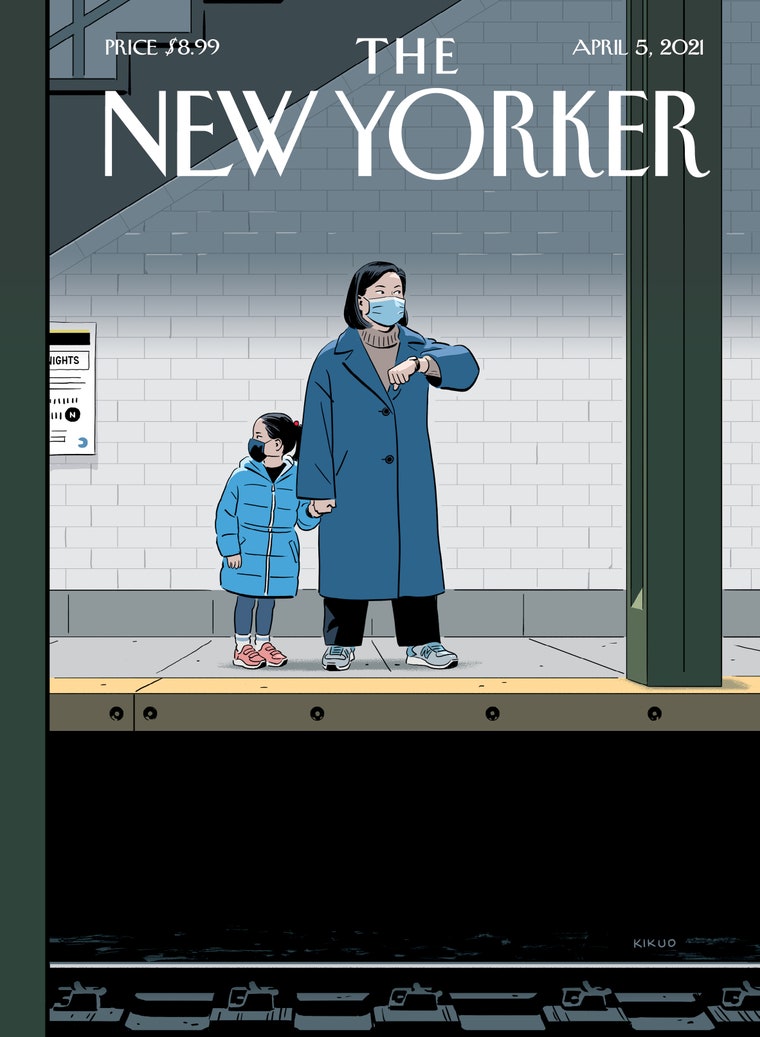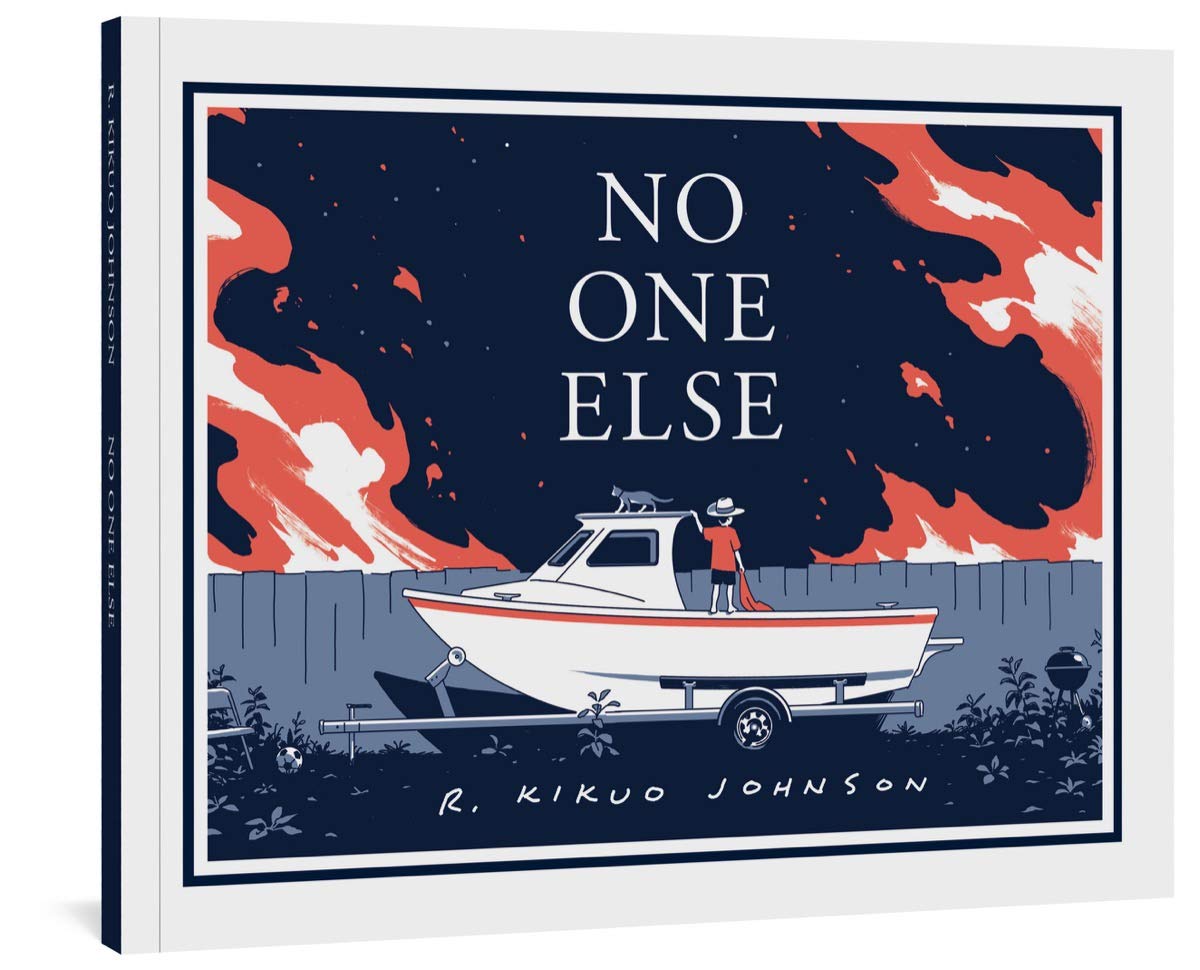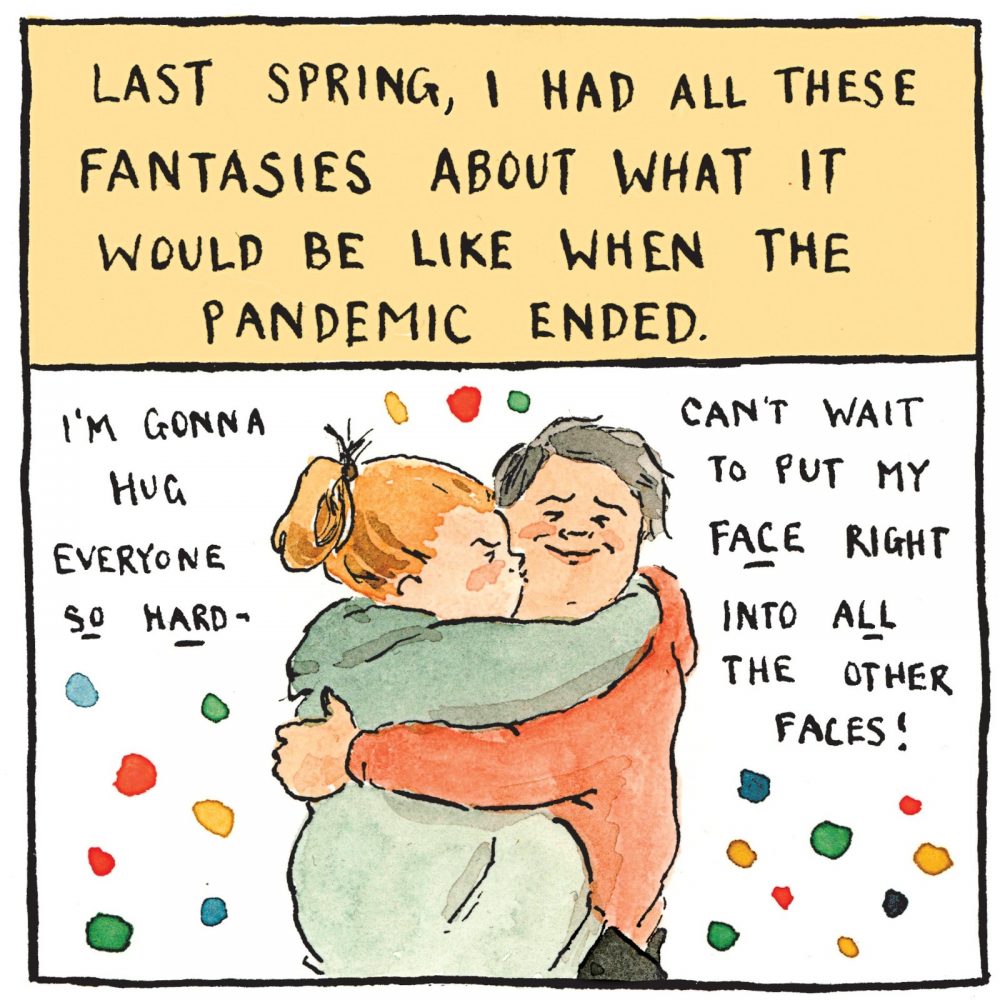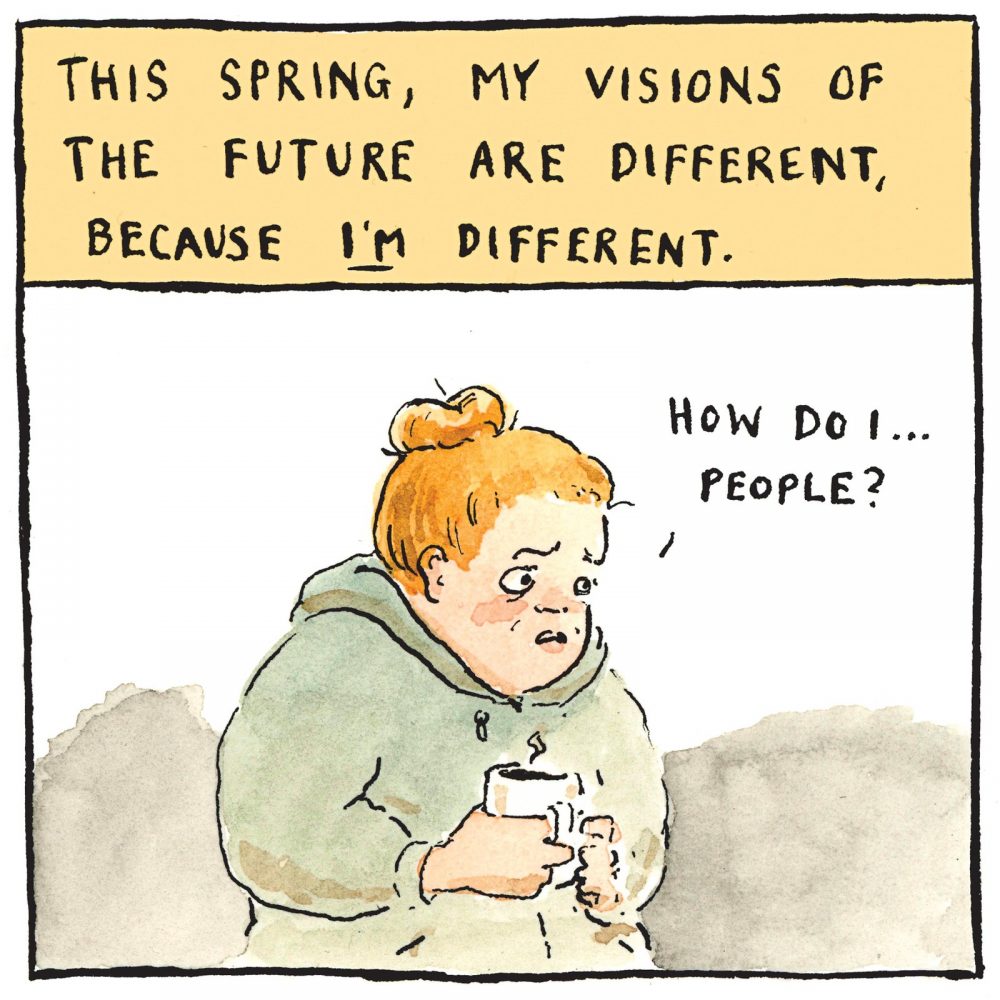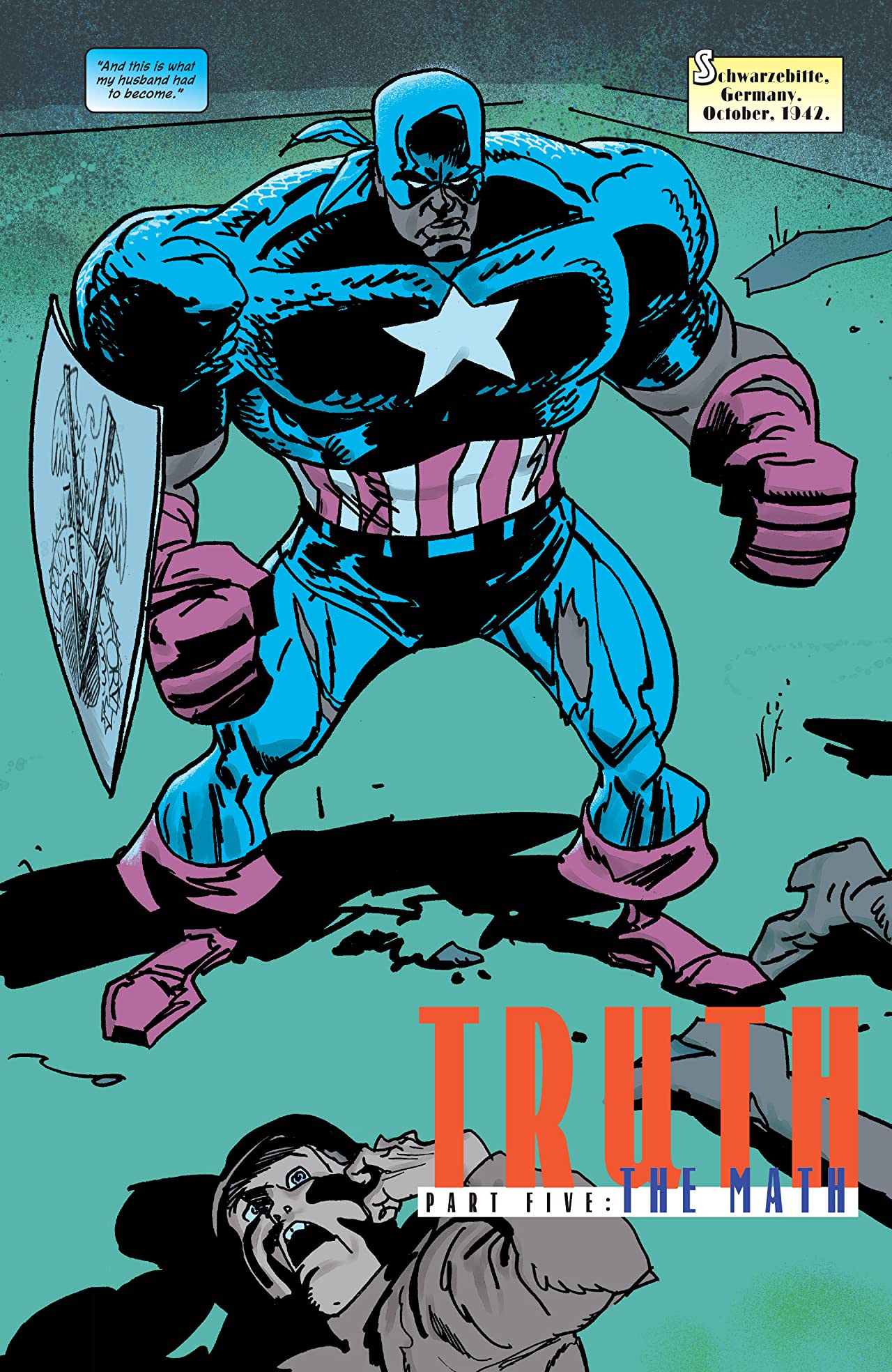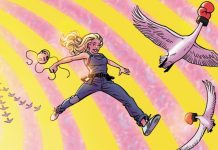§ Nice Art: R. Kikuo Johnson has the cover to this week’s New Yorker. Johnson has been doing illustrations for years but has been largely absent from comics since his stunning debut Night Fisher, all the way back in (check notes) 2005! Holy cow, a brief 16-year absence. Johnson has a NEW graphic novel coming out in November, though, No One Else, (affiliate link) which is:
In this graphic novel, Charlene is a divorced mom, has a young son named Brandon, and works full-time as a nurse while also caring for her infirm father. She is barely holding their lives together when tragedy strikes and leaves Charlene and Brandon on their own. Charlene, who has put everyone but herself first for years, sees it as an opportunity for a new start of sorts. That is, at least, until her easy-come, easy-go brother, Robbie ― a well-intentioned but unserious semi-professional musician ― rolls back into town after a long absence.
New Alison Bechdel and new R. Kikuo Johnson in 2021! What a year.
§ As long as we’re talking about The New Yorker, Emily Flake has a lovely comic in this week’s issue as well, “Visions of the Post-Pandemic Future (Revised).”
§ And because you can literally never have too much Emily Flake, she also had a food diary for Grub Street — with PIE!
My real thing is baking pies. Another of the unpleasant things I’ve learned about myself during the pandemic is that I absolutely just baked pies to be a show-off, because I have not baked a pie for myself nor for my family this whole time. I have won two separate awards for pie-making. This is literally the only thing I will ever brag about. The first one was for a chocolate silk pie and the second one was for a custard pie that was flavored with this Bangladeshi five-spice.
A baking aside: Anytime I have to grease a pan, I use a 1:1:1 mix of Crisco, vegetable oil, and flour that I make in batches and keep for all my pan-lube needs. It works about a billion times better than spray grease. YOU’RE WELCOME.
§ In the NY Times Magazine, a long piece about The Black Nerds Redefining the Culture that talks to a lot of people about being a Blerd, Afrofuturism, and fandom in general:
Back in the 1980s in Mobile, Ala., two cousins — a boy and a girl — spent hours together conjuring imagined worlds. He loved comic books; the Incredible Hulk series was his favorite because, though the boy could never be white like Bruce Banner, he could perhaps turn green like the Hulk. She loved science fiction; Tanith Lee and C.S. Friedman enchanted her, as did Octavia E. Butler, who was Black like her. Fast forward half their lifetimes and the boy, now a 48-year-old man, the stand-up comic and political commentator W. Kamau Bell, has won three consecutive Emmys for CNN’s “The United Shades of America.” The girl, now a 48-year-old woman, the novelist N.K. Jemisin, has won three consecutive Hugo Awards for the novels in her Broken Earth trilogy. “I get goose bumps thinking about it,” Bell says. “The two of us in my grandmother’s house as kids laying on the floor, her writing and me drawing and ultimately clinging together because we didn’t feel like we fit in.” That sense is common to Black nerds, particularly among those who grew up before there was a name to call themselves. “I was in my 30s before I heard the word ‘Blerd.’ And I thought, ‘That would have been helpful when I was 12,’” Bell says. According to him, it’s about “planting a flag.” Blerd stakes a claim for the free and full exercise of Black individuality within the space of a collective identity.
§ Business news: HarperCollins is buying Houghton Mifflin’s trade unit:
After losing out to Bertelsmann’s Penguin Random House in its bid to buy Simon & Schuster, News Corp and its HarperCollins subsidiary has reached an agreement to buy the trade publishing division of Houghton Mifflin Harcourt for $349 million in cash. HMH put the division up for sale last fall as part of its strategy to become an educational technology company for the K-12 market. News Corp hopes the deal, subject to regulatory approval, will be completed by June 30, 2021, the end of its fiscal year.
With 2020 revenue of $191.7 million in 2020, HMH Books Media is generally considered to be the sixth largest trade publisher in the country. It has a backlist of more than 7,000 titles, and is particularly strong in children’s publishing, literary fiction, and a number of nonfiction areas including cooking and lifestyle. In 2020, HMH’s backlist accounted for 60% of its revenue, News Corp said. HMH also has an active licensing business. In 2020, licensing revenue generated about $13 million.
The backlist also includes authors like J.R.R. Tolkien, George Orwell, Robert Penn Warren, Philip Roth and Lois Lowry, so it is indeed a money mint.
With PRH looking to buy Simon & Schuster, this consolidation means that there will probably be only four big publishers in a few years — HarperCollins and Penguin Random House and then Hachette and Macmillan. They all love graphic novels, though!
§ And in more business news, Rob Salkowitz adds much savvy analysis to last week’s bombshell move of Marvel to PRH.
Though Marvel has an ironclad commitment to the comics specialty market, the company has had a contentious relationship with Diamond going back decades. In the early aughts, then-Marvel President Bill Jemas approached Random House to see if the company could build an alternative distribution channel to sell periodicals into the direct market. After months of study, Random House determined that the fixed costs of handling low-priced material like comic books wasn’t worth the trouble, despite the appeal of non-returnability. Kuo-Yu Liang, who worked the deal on the Random House side before taking a job with Diamond shortly afterward, explained that “…when you are dealing with higher priced books, there’s more revenue opportunity than handling lower-cost comics. Diamond has a singular focus on the comics market and they are set up for that set of challenges.” He said he passed the proposal along to other book distributors once Random House decided to pass, and apparently, one serious competitive challenge to Diamond was only held off at the last minute and great expense.
Salkowitz also raises the interesting question of what is in it for PRH? The answer, he says, may be the surprising resiliency of indie bookstores, which enabled PRH to develop programs for smaller, niche stores — which they can now use for the DM.
§ Most people are going to have a good chuckle at this headline: People’s Expensive NFTs Keep Vanishing. This Is Why
A week later, he opened up his digital “wallet,” where the artwork would supposedly be available, and was faced with an ominous banner reading, “This page has gone off grid. We’ve got a 404 error and explored deep and wide, but we can’t find the page you’re looking for.” Tech People Are Stealing Art and Turning It Into NFTs BEN MUNSTER 03.15.21 The artwork, which he expected to be on the page, had disappeared entirely. “There was no history of my ever purchasing it, or ever owning it,” he said. “Now there’s nothing. My money’s gone.”
Ya, losing that expensive code is a bummer! The article goes on to explain why this happens and…..brain exploded.
Ed Clements is a community manager for OpenSea who fields these kinds of problems daily. In an interview, he explained that digital artworks themselves are not immutably registered “on the blockchain” when a purchase is made. When you buy an artwork, rather, you’re “minting” a new cryptographic signature that, when decoded, points to an image hosted elsewhere. This could be a regular website, or it might be the InterPlanetary File System, a large peer-to-peer file storage system.
Ugh, please wake me up when this fad is over.
§ Here’s an excellent piece by
Morales’ career at Marvel, and work on the ongoing Captain America comic, was cut short by the controversy that followed him. Still, Truth was impossible to ignore, at least for a time. Christopher Priest and Joe Bennett introduced the son of Isaiah Bradley, Josiah X, in summer 2003, immediately after Truth reached its conclusion. In 2005, Allan Heinberg and Jim Cheung introduced Elijah Bradley, the grandson of Isaiah who took up the role of the Patriot as a member of the Young Avengers.
When Disney purchased Marvel in 2009, Truth went out of print and hasn’t been republished since, though it was recently released digitally on Marvel Unlimited and ComiXology as of last year. Josiah X hasn’t appeared since 2004, Elijah Bradley since 2012, and a new character, Rayshaun Lucas, has taken up the mantle of Patriot. A decade after it debuted, Truth became a hard-to-find collector’s item, the Black Captain America, a piece of little-known trivia, and the character’s name and legacy left largely unmentioned in the pages of Marvel Comics. Robert Morales died at age 55 in 2013.
Then Marvel editor in chief Axel Alonso is also credited with co-creation of the character in TF&TWS credits — and as a long time friend of Morales, I know he had a lot of concerns about Bradley appearing in other Marvel comics and films. I can only imagine what his reaction to TF&TWS would be. Miss you, Bob.
§ James Whitbrook looks at The Falcon and The Winter Soldier for queer content — and possible queerbaiting:
But there’s more to The Falcon and The Winter Soldier’s queer theory vibes than a few gags—especially when it comes to Bucky Barnes. Marvel fans have long considered the potential for Bucky to be seen as a queer character, casting him as a sort of lovers-to-enemies-to-lovers foil for Steve Rogers ever since Stan debuted in Captain America: The First Avenger. Even as Avengers: Endgame took Steve Rogers’ personal arc down a path away from Bucky, the theory has lingered, only to heat up again with the arrival of the new show. In the first episode of the Disney+ series, Bucky goes on a cut-short date with a waitress from a local sushi place, only to comment that his foray into the world of modern online dating apps lead “to lot of weird pictures,” only to add “I mean, tiger photos?”
Apparently this last line led some fans to think that Barnes was looking at male profiles, since more men like to pose with cats and tigers on their dating profiles. A bit of a reach but ships will ship.
§ The NY Times has a big fashion piece on the return of the brooch but is seemingly unaware of the hot and heavy pin collecting that has been going on in fan spaces for a while. Sigh.
§ You can now view the Louvre’s entire collection online. Goodbye for today as you race off to browse, but be aware….I hope you like French academic painting.


